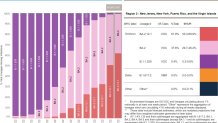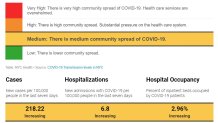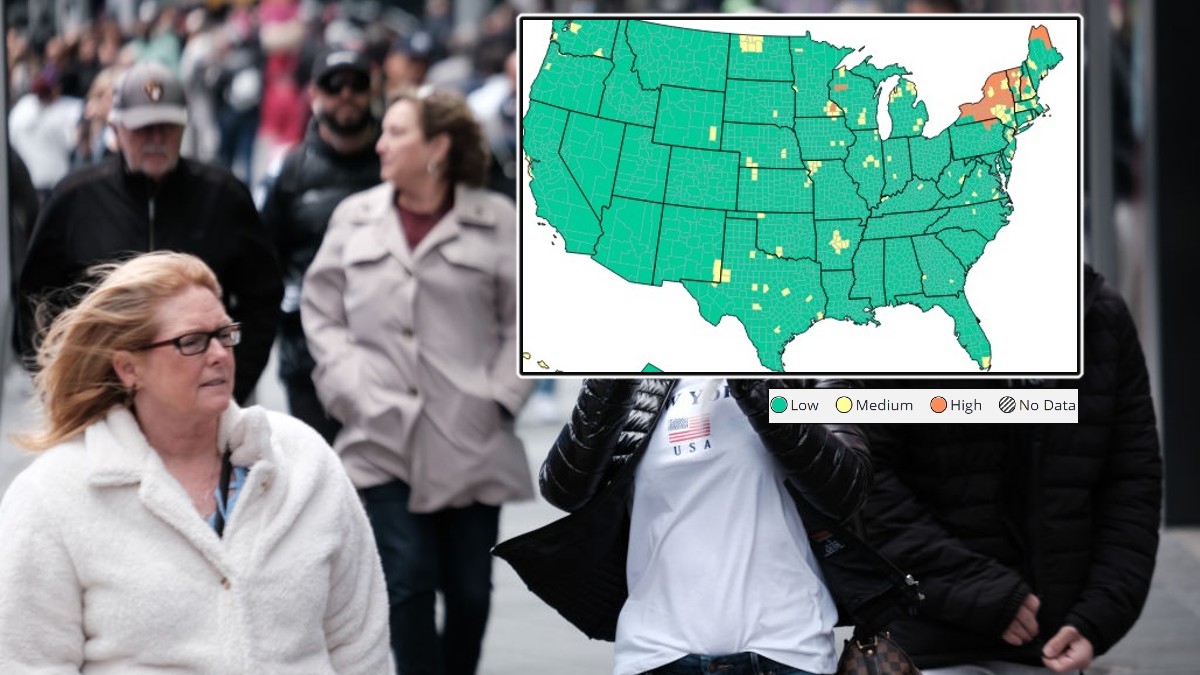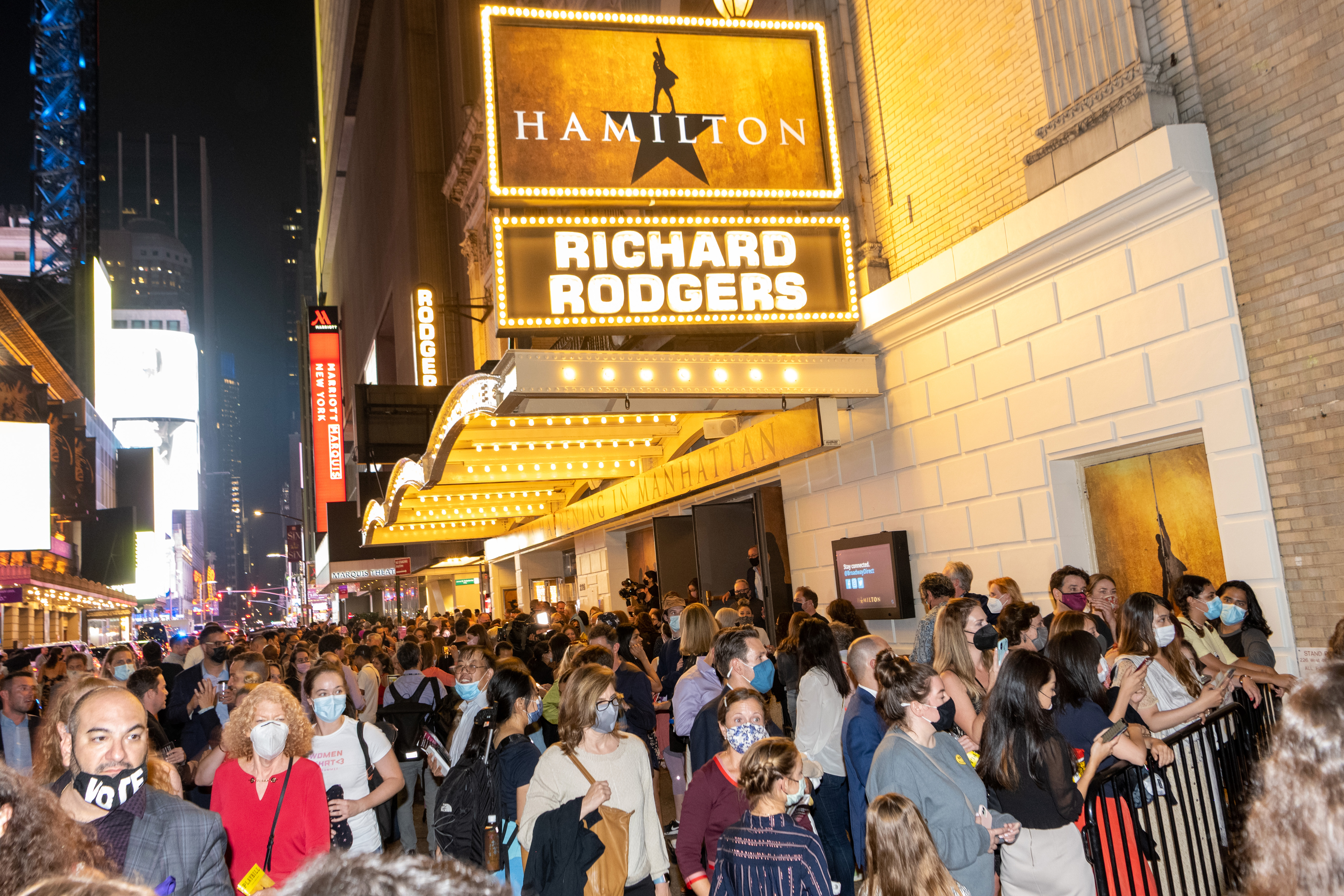The COVID-19 subvariant estimated by New York state health officials to be even more contagious than the first descendant of the potently infectious omicron strain now accounts for up to 70% of all virus circulating in the region that encompasses the Empire State, according to new CDC data released Tuesday.
The prevalence of BA.2.12.1, which health officials say appears to be up to 27% more contagious than BA.2 (which also was said to be more contagious than its predecessor, omicron), in the agency's New York region has been increasing at a far faster rate than nationally, data shows.
The CDC puts it at around 62% of COVID cases in the New York region, which for its purposes also includes New Jersey, Puerto Rico and the British Virgin Islands, though says BA.2.12.1's share of cases could be higher. Either way, that subvariant is the dominant strain locally, while the first omicron variant, BA.2., has retained its national dominance in recent weeks ( 62% of cases vs. 36.5% for BA.2.12.1).

Get Tri-state area news and weather forecasts to your inbox. Sign up for NBC New York newsletters.
While no scientific evidence to date links BA.2.12.1 to more severe COVID-linked illness or reduced vaccine efficacy at this point, the heightened transmissibility appears clear. New York state, for example, accounts for the vast majority of the 56 U.S. counties designated by the CDC as having a high COVID risk to the community.
None of the high-risk U.S. counties, according to the CDC, are in New York City, but the five boroughs appear to be experiencing a trickle-down effect of sorts.
The NYC health department's variant tracker doesn't explicitly break out subvariant BA.2.12.1, but it does indicate a rough split between "non-BA.2" omicron and BA.2 omicron in current cases. The latter's dominance appears to have started to ebb in early April, based on the city's latest variant account.
The share of positive COVID samples genomically sequenced to isolate variants, though, is a fraction of the total cases, which means omicron's subvariant prevalence is likely well underreported.
Statewide COVID reinfection rates, both in terms of breakthrough cases and reinfections among those who haven't been inoculated, have been rising every week since March 7, New York data shows. It's not clear though what's causing that.
"Significant community spread" of BA.2.12.1 was first noted in the state's Central New York region last month, state health department officials said -- and tied the increasing infection rates to that specific omicron subvariant. Now, Central New York's COVID numbers are leveling off, officials say, but other parts of the state appear to be encountering similar, even if smaller, viral increases associated with it.
New York City raised its COVID alert level to medium on Monday as cases surpassed a rate of 200 per 100,000 people in the five boroughs, health officials said. It marked the first time the health department has adjusted that level since debuting the new system under Mayor Eric Adams' administration earlier this year.
Manhattan and Staten Island, respectively, have the highest transmission rates per 100,000 residents, the latest health data show, but it's the first borough that is having a disproportionate impact on the city's overall rolling new case rate.
Those two boroughs are also now classified as "medium" COVID alert counties by the CDC.

No new COVID protocol will be implemented (or reimplemented) at this point, but should the alert level reach high -- the highest of the three laid out by health officials -- the city will consider requiring face masks in all public indoor settings again.
For now, NYC Health Commissioner Dr. Ashwin Vasan says New Yorkers should exercise greater caution than they have in the last few weeks -- and those who are at higher risk for severe disease from COVID, for whatever reason, are advised to consider avoiding crowded indoor gatherings and other higher-risk situations.
The city continues to recommend that all New Yorkers, vaccinated or not, wear a mask in public indoor settings as highly contagious subvariants of omicron continue to spread across the city, state and much of the globe.
While new case rates are ascending, they remain well below what they were during omicron's peak surge in January. Most importantly, hospitalizations and deaths, the far more important metrics from a public health perspective, remain on the decline.
More Coverage
"The coming weeks will be critical to slowing the spread of COVID-19 and getting back to a low-risk level so we can more safely enjoy our spring," NYC Health Commissioner Dr. Ashwin Vasan said Monday in announcing the alert level change. "And remember, the steps you take to protect yourself also protect others, especially those most vulnerable. As a city, we have the tools we need to beat back this virus. As New Yorkers, we are in this together. By incorporating these steps into our daily lives, we can continue to look out for one another and ourselves."




